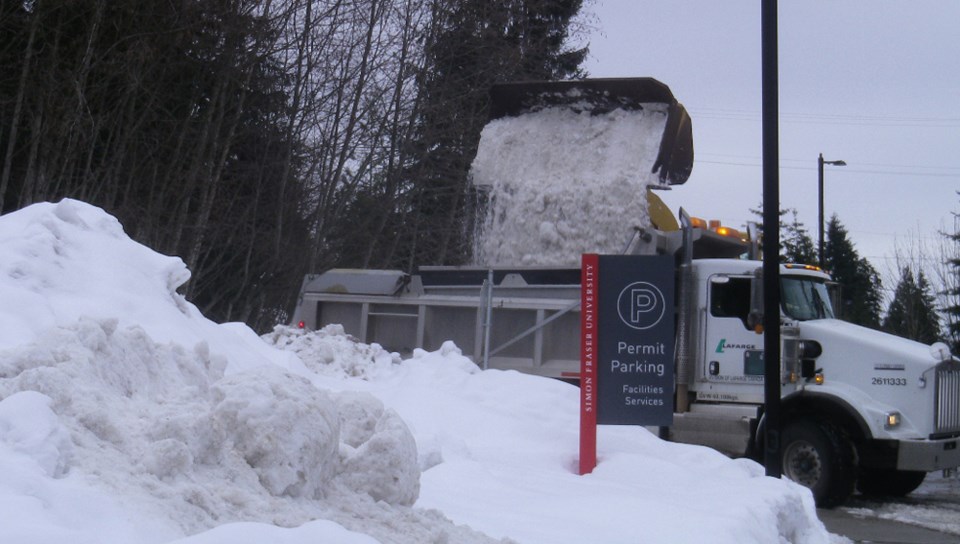While salt, sand and brine helped melt ice off the roads, it hasn’t helped local waterways.
Christine Ensing, an environmental services officer with the City of Burnaby, told the NOW some of the creeks that flow off Burnaby Mountain are experiencing higher-than-normal salt levels above the allowable limit. Under B.C.’s water quality guidelines, levels can’t exceed more than 600 milligrams per litre (mg/L).
“We do have concerns with the amount of salt that’s being used, but I mean, this has also been a very different winter,” she said, noting Burnaby Mountain’s roads are maintained by SFU, while Gaglardi Way and Burnaby Mountain Parkway are looked after by the city. “We’ve got a geography here where we have some steep roads and deep valleys, so we have to keep the roads safe.”
One tributary, located where SFU’s old salt shed used to be, on the south side of the mountain, recently had a reading of 2,700 mg/L, according to John Templeton, chair of the Stoney Creek environment committee. Templeton has been taking a reading almost every day for the last two months.
“It’s bad. Most of January, they (SFU) were always out of compliance,” he said.
Templeton is worried the excessive salt in local creeks will have a negative impact on the salmon eggs that are nestled in the gravel. The streamkeeper pointed to a local experiment conducted a few years ago that saw salmon eggs placed in three different waterways.
“We watched how those eggs developed. The first thing the study noticed was that there was a higher mortality (rate) with the higher concentration (of salt), and there was a larger number of deformities,” said Templeton, adding he won’t know what kind of damage has been done until the fish emerge in the spring.
Templeton said he’s concerned and “somewhat disheartened” about the salty creeks, given that 2016 had the biggest chum run in decades.
“It was the best year ever,” he said of the 2,400-plus chum that returned.
One alternative to salt, Templeton suggested, is EcoTraction, a non-toxic, all-natural volcanic rock. According to the Canadian company’s website, the granules embed into ice and snow, creating a solid, non-slip surface.
“It all comes down to cost,” said Templeton. “Salt is cheap, so as long as they’re allowed to use salt, they’re going to use it.”
Meanwhile, SFU’s director of communications Kurt Heinrich said dealing with snow and ice is approached as an issue of public safety.
“We have a state-of-the-art winter operations facility where salt can be safely handled and where we manufacture brine. Our practices are compliant with all applicable regulations,” he wrote in an email to the NOW. “Our approach is specifically designed to minimize the use of salt. Brine is used on our roads before a storm or to deal with icy conditions.
“During a snowfall, our focus is on removing the snow from the roads by using snow-plowing equipment. Salt, and sometimes sand, is used to deal with residual snow and ice in steep areas where vehicle traffic may be dangerous.”
Heinrich noted the school’s supply of road salt ran out two weeks ago and a new shipment is expected Jan. 19.
“Our staff keep abreast of advancements in dealing with snow and ice. We are currently investigating the use of beet juice to see if it is a method that might be viable for us to adopt in the future,” he wrote.



